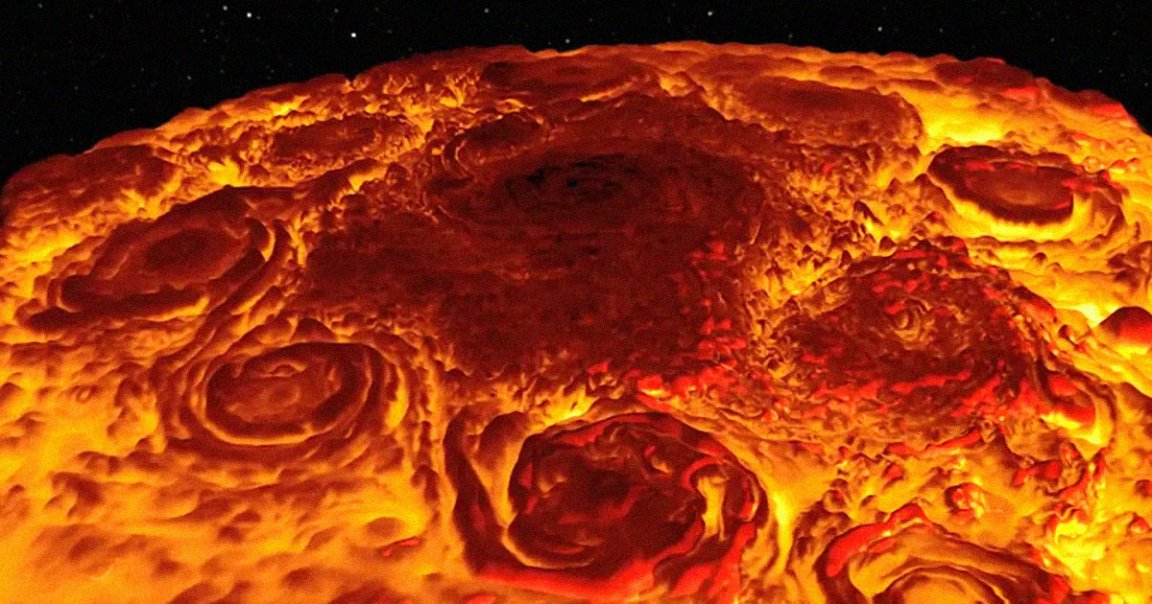
The Earth isn’t the only planet experiencing extraordinary heat waves.
A team of scientists led by James O’Donoghue, planetary scientist at the Japanese Aerospace Exploration Agency (JAXA), was shocked to discover a cataclysmic “heat wave” in Jupiter’s atmosphere, reaching scorching temperatures of 1,300 degrees Fahrenheit.
The heat wave stretched for some 80,000 miles — roughly the equivalent of ten Earths lined up next to each other — racing from the gas giant’s poles to the equator at speeds of over 600 mph.
Until now, why Jupiter experiences extreme temperatures — even in the absence of surging heat waves — has remained a scientific mystery. It only gets less than four percent of the warming sunlight that Earth does, which should suggest that it’d be a lot colder.
In fact, estimates have found that Jupiter’s upper atmosphere should be a frosty -99 degrees Fahrenheit. But according to observations, its upper atmosphere is roughly the same temperature as Earth’s, sitting at around 788 degrees Fahrenheit.
This discrepancy, nicknamed the “giant planet energy crisis,” has been puzzling astronomers since the 1970s — but fortunately, we may be getting much closer to an answer.
At this year’s Europlanet Science Congress (EPSC), O’Donoghue and his colleagues presented their latest theory as to what may have caused Jupiter’s blistering heat wave: its auroras.
Unlike Earth’s auroras, which only occur during intense solar wind activity, auroras are a permanent presence in Jupiter’s atmosphere.
O’Donoghue and his colleagues previously found that these auroras can get intense enough to heat the regions around Jupiter’s poles. Forceful winds then push this heat around the entire planet’s surface.
The massive “high-temperature planetary-scale structure,” as described in a paper published in the journal Nature last year, only added credence to the theory.
“The heat wave is highly likely the result of a recent, large injection of energy to the auroral/polar region,” O’Donoghue told Futurism. “We see this at Earth, but this is the first time we’ve seen it at another planet.”
“These heat waves are an extra source of heat in upper atmospheres in general,” he explained, “driven by the solar wind.”
In fact, Jupiter may not be the only planet experiencing these scorching waves of heat.
“Saturn, Uranus and Neptune are also measured to be hundreds of Kelvin warmer than expected based on the amount of sunlight they receive,” O’Donoghue added. “There is evidence that the distribution of auroral heat occurs at Saturn, while we can only speculate that it may also exist at Uranus and Neptune at present.”
In short, the Sun could have far-reaching effects on the evolution of not only Jupiter’s atmosphere, but other planets in our solar system as well — a tantalizing glimpse into what drives the turbulent nature of our largest planetary neighbors.
More on Jupiter: James Webb Captures Jupiter in Glorious Infrared